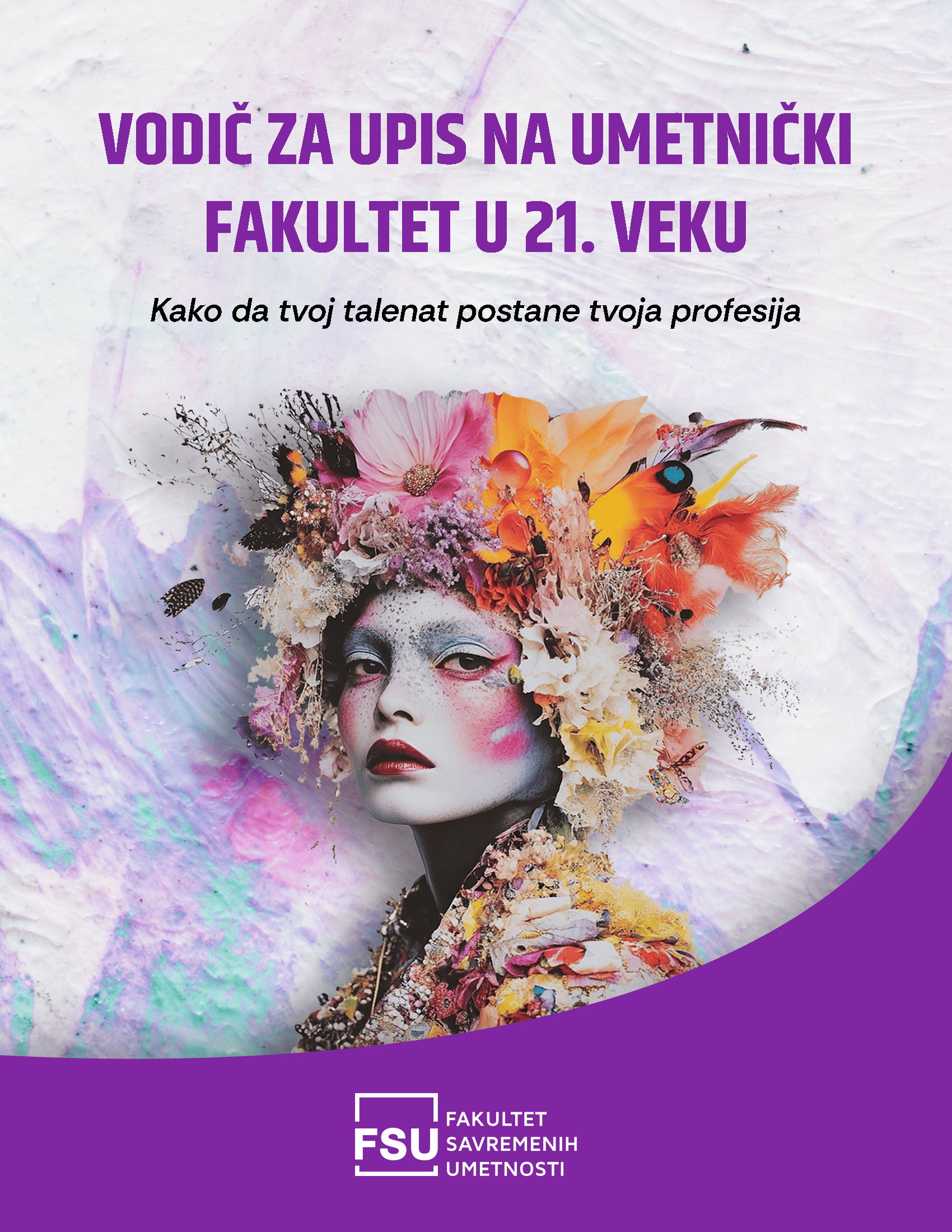Here, one must create with hope
An interview with Miša Filipovac, doctorand at Faculty of Contemporary Arts
Source: Aha Magazine
By: A. T.
If drawing is the most intimate thought, his thoughts are delicate to the point of greatest vulnerability. His bambies faithfully serve as reminders of the delicacy of artistic endeavor, and the beauty and innocence that we hunger for in a reality stripped of meaning, which only the art and the artists can still provide. Slender and ethereal, like a “thinking and feeling reed”, Mišo Filipovac is a born artist.
It was a natural route, from the secondary art school in Užice, where he specialized in conservation, to painting studies at the Academy of Arts and doctoral studies at Faculty of Applied Arts and Faculty of Contemporary Arts under one of our greatest visual artists, the master of drawing Vladimir Veličković. His works can currently be seen at the exhibition “Sets” in Kolarac Endowment Gallery.
Mural painting is quite big around the globe now, what do you think about this popularity and which wall in which city would you like to paint?
Big cities like Berlin cultivate street art in a completely different way, but it’s becoming common here, too. This is no longer mere decoration, but necessary communication, often with a social message, a connection between all of us who pass and remain there.
Street art has long since stopped being just pretty, and perhaps it never was just that, but we view it as more important now. Reasons for its existence are numerous. I must emphasize that mural painting has a broad range of application and that it is not limited strictly to walls, but a complex area that brings together the fine and the applied. Think Svetlana’s Wall in Ljutice Bogdana. ?
You are pursuing a PhD in Vladimir Veličković’s class; what is the topic your thesis and why did you choose Veličković?
I don’t think it’s necessary to speak much about his greatness and this choice; I saw him as the most adequate person in the country at the moment for the further development of my drawing concepts. The final choice of the subject is yet to come, but you can already see an introduction to the project at my solo exhibition in Kolarac Gallery, from April 5 to 15 in the very heart of Belgrade.
What cycle of drawings has changed your life in a way?
Man is an endless source of inspiration to me. I am currently working on a series called “Sets”, which is still underway. Thematically, it’s nothing pompous, a little bit of intimism with my micronarratives. Does, deer, toys, soldiers… which I present in imposing formats. I strive to have clear thoughts. I am not one of those artists whose color is emotion and whose line is their soul, or whatever…
Things happen, consciously or unconsciously. Drawing are created in the course of continual work, as a consequence of many processes and cycles that are sometimes inexplicable… I have been doing painting, drawings, for years, and the best is yet to come. Here, one must create in hope.
A painter leaves a mark, and we recognize it; how about you and your mark?
Well, I hope I’ll leave a mark in art history. (laughter)
Do the titles of your exhibitions provide a hidden message on what you would like to convey?
The titles are a part of the context in which I address the audience and resolve my dilemmas. I think they can be transparent and direct, but sometimes they can also be mystical, although I am not particularly prone to the latter.
An animal is present as a bambi or a deer, or a doe; it has been there for two years as a parallel, or a counterpart to man. I started from an independent individual who does not bother or endanger anyone. Every childhood’s leitmotif. For us people, it represents an understanding of beauty of grace, pride and delicacy, intelligence and caution, which can easily turn into trust if the conditions are right. I place this idyllic metaphor into context of survival and danger. Personal struggle…
We recognize the culprit in ourselves and our (un)awareness and our intolerance to differences. The whole story of “Sets” is a play between hidden people – trophy hunters, and exposed animals placed directly on the whiteness of the paper in stunned positions, frozen in a moment of uncertainty.
What do you say to students when they are starting to study drawing and painting?
For five years I have been doing a job which I kind of secretly desired, but never said it out loud. Perhaps this is how the magic came true. (laughter) I try to be constantly available to them, ready to assist. With time, we have built a collegial relationship, which I deem suitable to my age.
I teach students that determination and the continuity of creation are related. I strive to make them aware that everything around them is subject matter for an artist, and that the drawing is the foundation and the essence. I try to get us to walk all the way to the goal, rather than rushing through the academic basics. We share creative energy, which is priceless for both sides.
Do you have any advice you would like to share?
I am still young for life’s wisdom. Are drawings/paintings sometimes a psychological map of the artist and his surroundings or something more than that? It is a source of great joy to me that painting, and especially drawing, are deemed important, at least internationally speaking. The new media have simply helped art branch further, without claiming that other disciplines are obsolete or any less important than they used to be. A work of art can be great, contemporary and atypical, even if it’s a drawing.
It is not a must that art should be politically engaged or correct, to build that sort of image in order to be big. There are great, perfect painters / drawing artists whose works are still technically traditional and vital. It is debatable what’s passé and what is yet to come. Being an artist in Serbia today is a privilege, partly maybe an act of madness and courage. As for the art scene, it does exist, every day, something happens, and that’s what’s most important. For me, drawing is the most intimate of thoughts.
As someone with an educational background in conservation, to what aspects of cultural heritage would you like to apply your skill?
I have never done conservation professionally since I finished high school. I think it’s a sound basis for anyone who wants to seriously and consistently dedicate himself to art and painting. An interesting fact, though: as a conservation student, I restored one of Vladimir Veličković’s works.
In art, what do you find fun, and what rubs you the wrong way?
Art used to start revolutions, deal with important issues and define the aesthetic standard. Of course, those times have a different sociological background, as well as economical, but is important to note that in this day and age art is not always tangible. This is always a source of confusion to the public, and manipulations abound.
I determined what’s real art to me a long time ago, so I am reserved when it comes to any sort of low quality content. If would be ghastly if art became totally inexplicable. I work only on my own aesthetics. I find special joy in the success of artists whose development and improvement can be perceived. As for the other part of the question, only half-baked conceptually packaged nonsense.
You can download the full interview in PDF format here.





